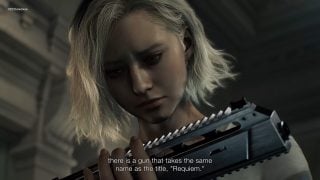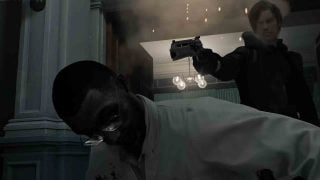Blazing Strike is undoubtedly inspired by the brilliant 2D pixel art and fluid game speed of the beloved Street Fighter: Third Strike. It’s right there in its name. Rarebreed’s solo developed fighter aims for the fast, rushdown-centric 2D fighting of yesteryear. Because of this, I had high hopes for this title amidst the sea of modern takes on the genre.
In motion, Blazing Strike could definitely pass for a Capcom or Neo Geo arcade fighter from the late ’90s. The game even defaults to using an arcade filter for the screen. Admittedly, this is the best way to play the game as it hides a lot of imperfections that playing without the filter exposes. However, I want to give Rarebreed credit for the wonderfully nostalgic color palette on display in the game’s busy backgrounds and the cool designs of the cast.
The character select screen plays host to Blazing Strike’s strongest suit: its roster of characters. Going for a similar Neo-Tokyo meets street fighting aesthetic as Third Strike, Blazing Strike nails what it set out to represent. Jake is the face of this cast, with his Jin Kazama-esque hoodie and glowing arm, fireballs and a seismic ground pound that would make Hulk proud. Shinsuke is the Ryu of Blazing Strike, a shoto who wants to keep training until he surpasses his own limits but focuses more on his kicks for range. MJ reminds me of Cammy, down to the military affiliation. Zero is a short, laser-shooting space robot who can fly around the screen at will. And of course, every fighter need a grappler which is where Alexander comes in like a combination of Zangief and King from Tekken. I greatly enjoyed and appreciated the character designs. And that’s not even getting into Graffi’s skateboard utility or Nagi’s snake charming ways. Every character was memorable, if not derivative.
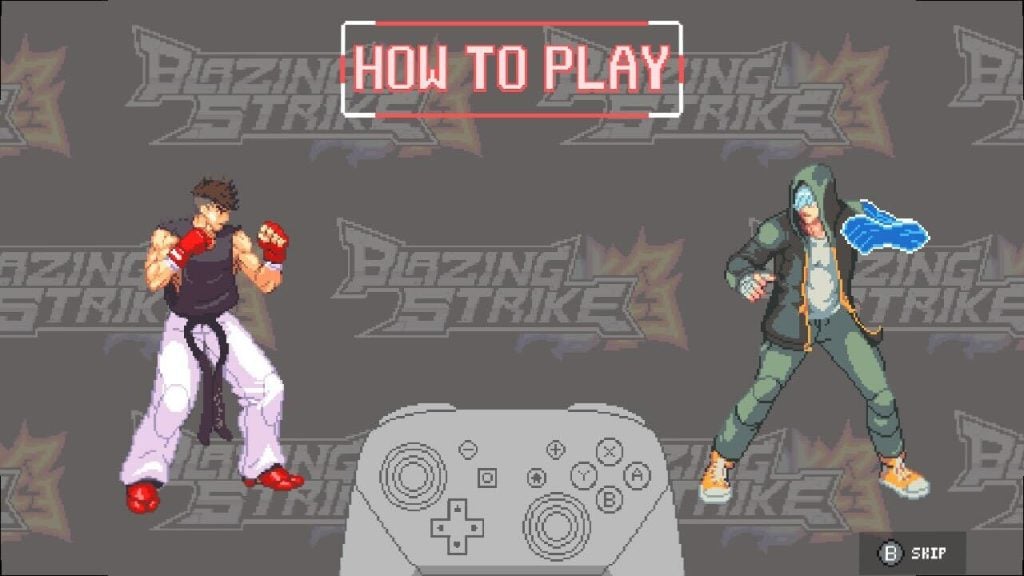
Blazing Strike goes for a timeless fighting game experience by offering up the tried and true Story, Arcade, Versus, and Training modes in addition to Online play. While fighting game story modes are usually not the focus of the substance, Blazing Strike’s exposition-heavy, confusing and unsatisfying Story mode is one of the worst examples of the genre’s shortcomings. An apocalyptic, religious symbolism-inflected war between a God, a nefarious government and a resistance of experimented-on fighting game roster stereotypes ends up playing out in the most confusing way. Text-heavy with still images of characters with occasional admittedly cool comic book strips with poor formatting hardly a compelling story makes. Especially when said story ends abruptly with a “To be continued” screen at a moment that hardly feels like an ending. Arcade mode isn’t much better considering you get no character-specific endings and nothing resembling a boss fight. You fight six random characters and you’re done. Stages in Arcade mode also include hazards that, instead of making for a fun challenge, mostly end up prolonging fights against absent-minded computers. Even on Blazing difficulty, the hardest difficulty in Blazing Strike, the computers never provided a challenge. Two unlockable characters provide an incentive to play through each of these modes once, at least.
To Blazing Strike’s credit, its Versus and Training modes are decent. Versus mode lets you and either a computer or a friend duke it out after selecting characters and the stage of choice. The match’s time limit can be customized and hazards can be turned on or off. A rematch option without booting players out to the main menu would have been nice, something Marvel Vs Capcom Fighting Collection from earlier this Fall also stumbled with. Training mode includes frame data and hit boxes, ending up being fairly comprehensive given the lack of features elsewhere in the game. Rarebreed knows who it is trying to appeal to and that’s the fighting game community.
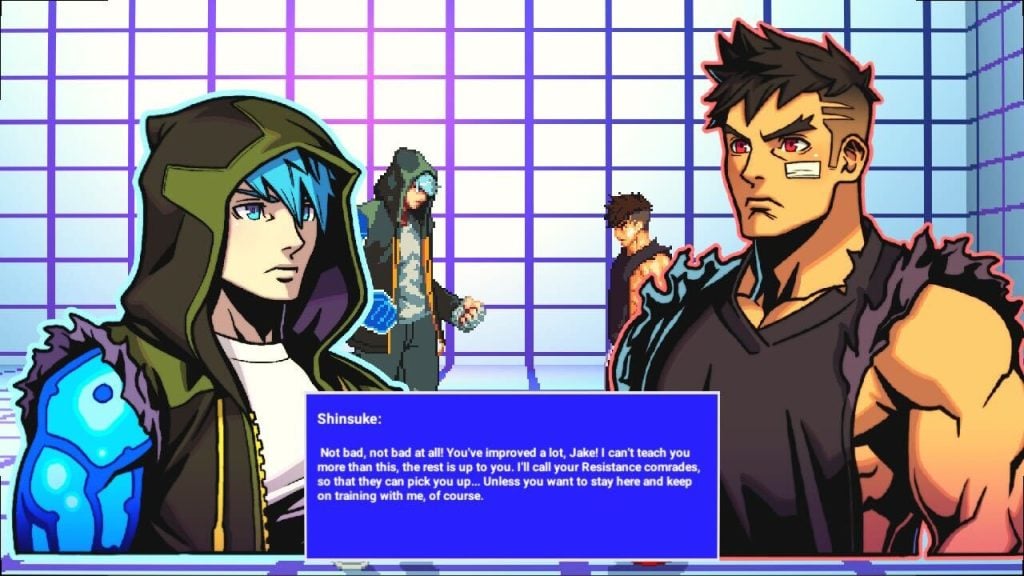
So, how does Blazing Strike play? It opts for a combination of classic and modern ideals. It’s a four button fighter, two buttons each for light and heavy punches and kicks. Pressing an attack button more than once results in a followup hit as an easy combo starter. This reminded me a little of Tekken or Fighting Layer, both 3D fighters. The fifth button is for the Rush meter, a green bar at the top of the screen above the character’s super and health meters. Rush allows you to run forward, take a backstep to dodge, extend combos, counter an opponent’s attack and cancel out of special attacks and super attacks. Rush works similarly to Street Fighter 6’s Drive gauge which allowed for similar mechanics. Where Blazing Strike falters is in the speed of regaining meter. If you use all of your Rush meter, your character enters a burnout state that requires wiggling the left stick back and forth to snap them out of it. Once you’re out of this state, your Rush regains almost immediately. While this implies that there is a bit of punishment for using all of your meter, it hardly matters when you get all of it back instantly. There is no weight to relying on Rush because it is essentially an infinite resource. If Rush could only be used once per round, I feel that more of a stake would be felt in matches and more creativity would be required of the player. As is, Rush is as much a base part of your moveset as any standard attack and doesn’t end up feeling like a hype mechanic.
The brilliance of your fighting system of course depends on the people playing the game and figuring out how to best utilize the offensive and defensive capabilities of it. In the hands of seasoned fighting game players, Blazing Strike could end up attracting a decent scene. However, it largely feels half-baked. Being that this is a solo developed fighter, I’m willing to forgive any visual or audio shortcomings. The visuals aren’t as fluid as I would prefer from a Third Strike-inspired fighter. Much of the audio mixing is compressed and muddy, especially the lackluster music. The impact of punches and kicks feels low due to weak sound effects. Characters usually have long match start voice clips that get cut off by the announcement of the beginning of the fight. Most of the time I had a hard time making out what a character was saying due to the poor quality of the recording. Regardless, it’s mechanically where I feel the game most lets its potential playerbase down. Counters are easy to land but are hardly required, supers are short and unsatisfying and the general feel of the game is limp. I wanted to spend more time with pushing the roster to its limits but the game’s single player let me down and dashed those hopes.
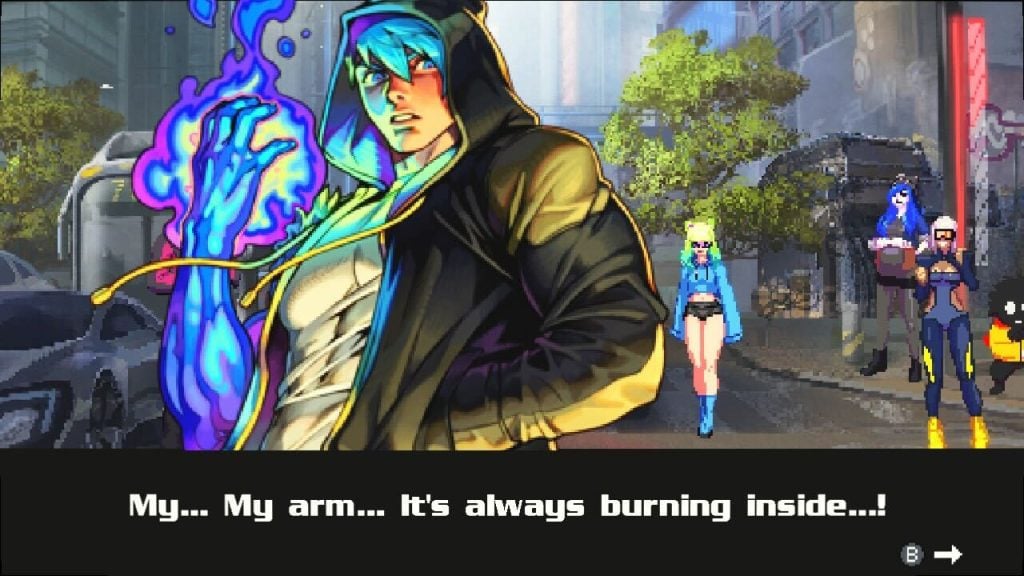
The online play is where Blazing Strike will have to find its foothold. If not on couches of friends sitting next to each other battling it out in Versus mode, the Online mode could hopefully give the game longer legs. Unfortunately, in my review period I couldn’t find any matches. But I did note that Blazing Strike is utilizing Rollback Netcode, allows custom lobby creation and quick play. The options are standard and easy to understand. This is one area Blazing Strike excels in. It looks and feels like a more accessible fighter, which could end up being its legacy. The depth for higher skill play is attempted, but only time will tell if Blazing Strike lands with fighting gamers.
Playing on Nintendo Switch was a good fit for Blazing Strike. I encountered no input lag or bugs, loading screens were snappy and the simpler nature of the game meant the controls translated well to handheld or docked play. I would recommend the Nintendo Switch version of Blazing Strike to anyone on the lookout for a new fighter to play on the system. However, I don’t think the game will speak much to Steam or PlayStation 4 and 5 players when the options of Street Fighter 6 and Tekken 8 are there. The main reason I feel this way is because Blazing Strike is retailing for $40, a much higher price than a budget fighting game without an established name or franchise should be. A fighter with a similar apocalyptic premise and futuristic presentation, Rumble Fish, only goes for $7 and is at least a little more well known than Blazing Strike is at this point. I find $40 to be too steep of a price of admission for this game, even if it is being published by Aksys Games and has a cool art style.
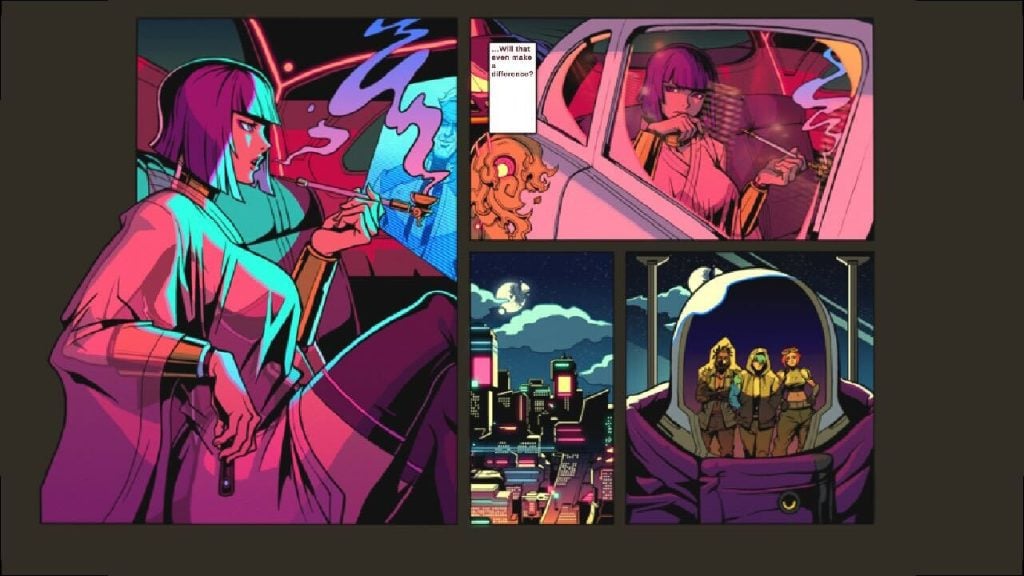
Blazing Strike wears its influences well on its sleeve after several years of development. The fighting game scene has moved forward significantly since the game’s initial reveal announcement in 2021 and after unforeseen delays, the end result is more half-baked than it is fully realized. The implication of that “To be continued” screen in story mode is that Blazing Strike wants to be a franchise. As is, if this is the first game in a series, there is much to be improved on. The high asking price for a solo-developed game that feels fundamentally flawed won’t convince players to give it much of a chance. Here’s hoping for a better future for Blazing Strike as it stumbles onto the prestigious fighting game circuit.
Leave a Comment
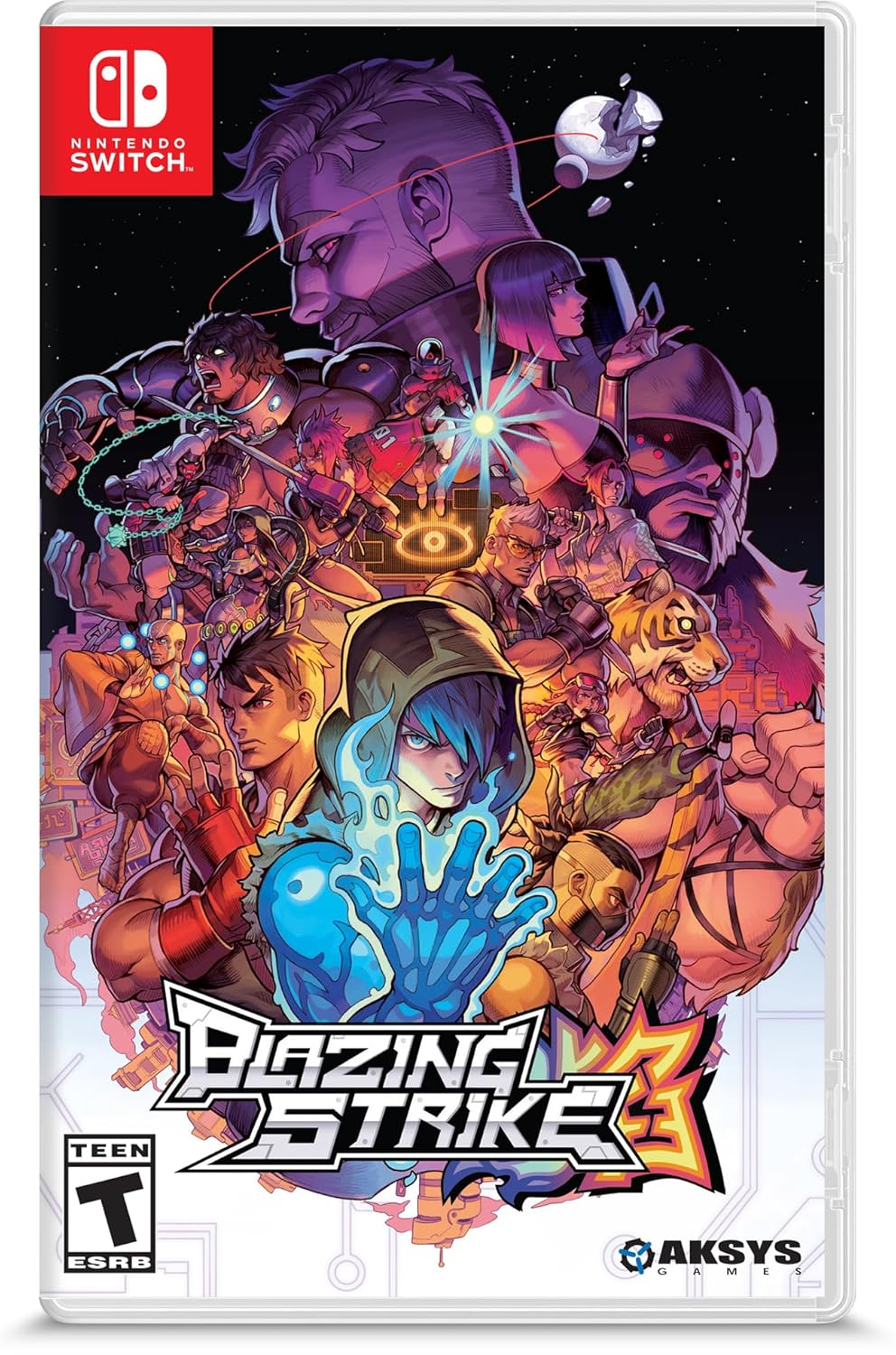
System: Nintendo Switch
Release Date: October 17, 2024
Categories: Fighting
Publisher: Aksys Games
Developer: RareBreed Makes Games
